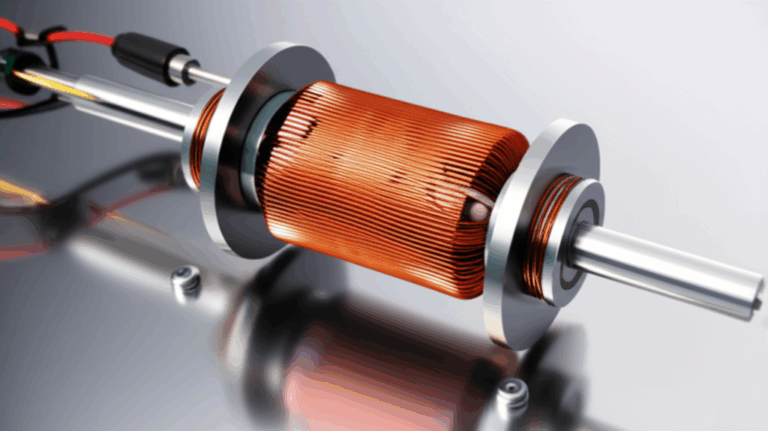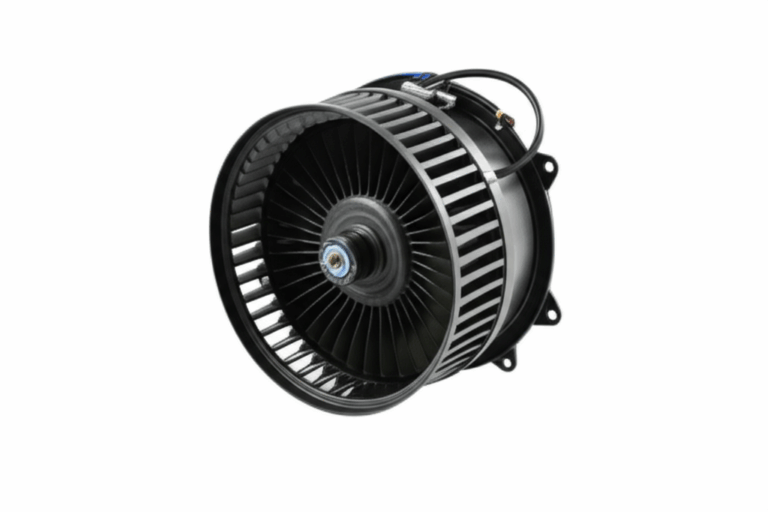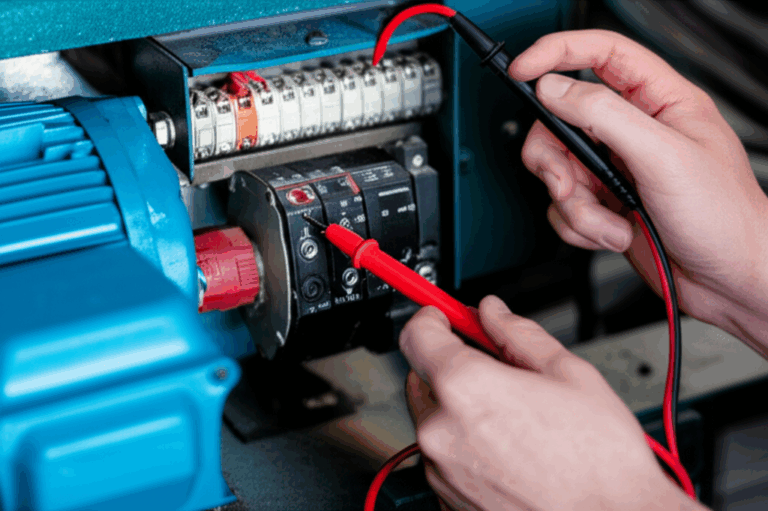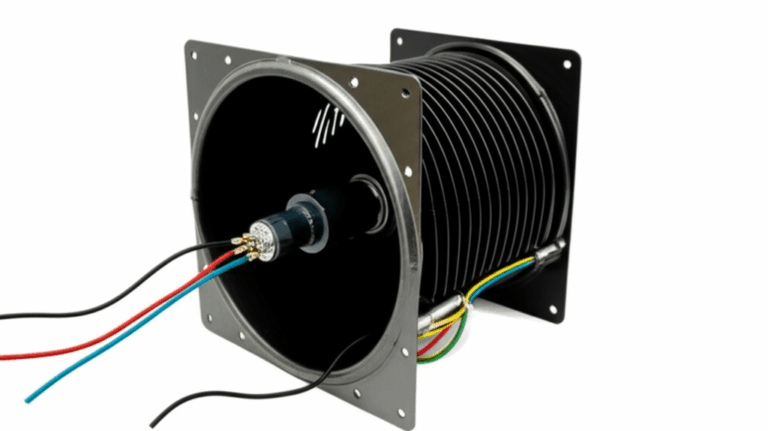
What is a Motor Starter? Your Essential Guide to Motor Control & Protection
A motor starter is a smart switch for an electric motor. It turns the motor on and off. It also keeps the motor safe. In this guide I show you how it works, why it matters, and which type you should pick. You learn simple steps you can use today. You also see real wins from plants and buildings like yours.
Table of Contents
- What is a motor starter in plain words?
- Why do we need motor starters?
- How does a motor starter work?
- What are the key parts of a motor starter?
- What types of motor starters should I consider?
- How do starters fit with safety, codes, and standards?
- Where do we use motor starters?
- How do starters compare to contactors, breakers, VFDs, and soft starters?
- How do I pick and size a motor starter?
- How do I install, wire, and maintain a starter?
- How do starters fit into PLC, HMI, MCC, and SCADA systems?
- Proof that starters help: data, cases, and a quick table
- Quick tips, common mistakes, and FAQs
- Summary: what to remember
What is a motor starter in plain words?
Here is the short answer. A motor starter is a motor control device that starts and stops an electric motor. It protects the motor from too much current and heat. It also guards the system from faults. Think of it like a seat belt and a key switch in one.
In most plants and buildings you see a motor starter in an electrical panel. It sits near pumps, fans, conveyors, compressors, and HVAC systems. It helps AC motors and DC motors. It can run on three-phase power or single-phase power. You see it in shops, farms, mines, water plants, and data centers.
Problem: motors draw a big motor starting current at start. That surge can be 5 to 8 times full load current. It can hurt the motor and cause voltage sag. It can trip a circuit breaker. It can stress belts, gears, and pipes.
Agitate: downtime costs money. Bad starts hammer pumps and seals. Bearings fail. Workers face risk. Energy bills spike when demand jumps.
Solution: use the right motor starter. It controls the start. It limits stress. It adds motor overload protection. It adds short circuit protection and ground fault protection. It keeps people safe. It boosts uptime.
Why do we need motor starters?
Starters do more than turn motors on and off. They protect and guide the motor from the first click to full speed.
- Motor protection and longevity: A starter limits overload. It catches phase loss and phase unbalance. It guards against short circuits. It can add surge protection. It keeps motor winding temperature in check. That helps prevention of motor damage and extends motor life.
- Equipment and personnel safety: Starters allow controlled operation and easy stop. They work with emergency stop buttons and pilot devices. They help with arc flash mitigation. They protect workers and gear.
- Optimized performance: Reduced voltage starter methods cut inrush. Soft starter and variable frequency drive (VFD) options lower mechanical shock. They manage motor acceleration control and motor deceleration control. They can improve power factor and reduce demand.
- System integration and automation: Starters tie into a programmable logic controller (PLC), a motor control center (MCC), an HMI, and a SCADA system. That improves industrial automation control and manufacturing process control.
I have seen plants make one smart change and save a ton. Swap a direct on line (DOL) starter for a soft starter on a large pump. Vibration falls. Seals last longer. Power bills drop.
How does a motor starter work?
A starter has two sides. The power circuit pushes energy to the motor. The control circuit tells the starter what to do.
- Power circuit vs. control circuit: The power circuit has the contactor and overload relay in series with the motor. The control circuit has push button stations, pilot light indicators, auxiliary contacts, a control transformer, and logic from a PLC or HMI.
- Starting sequence: You press start on a push button. The control circuit energizes the contactor coil. The contactor closes and sends power to the motor. The overload relay watches current and heat. Some starters add reduced voltage starter steps or soft starter ramps to ease inrush.
- Stopping and protection: You hit stop or an emergency stop. The control circuit drops the coil. The contactor opens. If a fault happens the overload relay trips. The motor stops and avoids damage. Phase sequence relay and motor protection relay can trip on phase issues.
That is the simple flow. You can add timers, interlocks, and auxiliary contacts for safety and logic. You can add input/output (I/O) modules to a PLC for remote control.
What are the key parts of a motor starter?
Most basic starters share four core parts.
- Contactor: This is the switching device that opens and closes the power circuit. It has a coil and main contacts. It can include auxiliary contacts for logic. You can buy NEMA motor starter sizes or IEC motor starter ratings. Brands like Siemens, Allen-Bradley, Schneider Electric, Eaton, ABB Group, Mitsubishi Electric, and Fuji Electric make solid contactors.
- Overload relay: This is the protective element. A thermal overload relay uses heat to sense overload. An electronic overload relay uses sensors and logic. Both trip when the motor draws too much for too long.
- Enclosure: This box holds and shields the gear. You pick enclosure types to match the site. Dust, water, and hazards drive the choice.
- Control parts: You use push button and pilot light devices. You may add a control transformer, a solid state relay (SSR), and auxiliary contacts for interlocking and signaling.
Many systems also include a circuit breaker or a thermal magnetic trip unit upstream. Some add a current transformer (CT) and a voltage transformer (VT) for metering and protection.
Pro tip: motor performance also depends on the motor’s magnetic core. High quality motor core laminations lower losses and heat. Good cores help starters do their job since the motor runs cooler and starts smoother.
What types of motor starters should I consider?
You have several types. Each fits a different need.
- Manual motor starter: You turn a knob or lever at the motor. It is simple. It offers local on and off control. It has built-in overload. It suits small motors and small shops.
- Magnetic or electrically operated motor starter: A coil pulls in the contactor. You can control it from far away. It is common in industrial electrical systems.
- Direct on line (DOL) starter: It applies full voltage start. It is the simplest. It works well for small motors with low inertia motor load and light torque requirements motor.
- Reduced voltage starter: It lowers starting current and torque. You can use a wye-delta starter (star-delta connection), an autotransformer starter, a primary resistor starter, or a secondary resistor starter.
- Soft starter: This is a solid state motor starter. It uses electronics to ramp voltage and current. It reduces mechanical stress and current spikes.
- Variable frequency drive (VFD): A VFD is not a classic starter. It controls speed and torque. It gives soft start and soft stop. It can improve power factor. It can save a lot of energy when the load varies. Use it when you need motor control beyond on and off.
I like to ask three quick questions. How big is the motor in horsepower (HP) or kilowatt (kW). How heavy is the load at start. Does the process need speed control. Your answers point you to DOL, reduced voltage, soft starter, or VFD.
How do starters fit with safety, codes, and standards?
Safety comes first. Use the National Electrical Code (NEC) for rules in the United States. Use UL listed motor starter gear and CSA certified motor starter gear as needed. Many sites also follow NEMA and IEC standards.
- NEMA vs IEC: NEMA gives size-rated starters that are robust and easy to pick. IEC gives fine-grained ratings that match duty and use. Both are valid. Pick the one your site uses.
- Electrical codes and labels: Follow electrical codes motor starter rules for wire size, protective devices, and panels. Use clear electrical diagrams and motor starter wiring drawings. Label the electrical panel. Add an emergency stop and pilot devices motor starter labels per site policy.
- Personnel safety: Use proper arc flash mitigation. Add ground fault protection where needed. Use lockout tagout. Add phase loss protection and phase unbalance protection. Train your team. Keep it simple and safe.
Where do we use motor starters?
You see starters in many motor control applications.
- Pumps motor starter: water treatment motor control, wastewater motor control, and agricultural motor applications.
- Fans motor control: HVAC motor starters move air for comfort. Data center motor control manages cooling.
- Conveyors motor starter: material handling motor and manufacturing lines. Machine tools and compressors motor control as well.
- Mines and oil and gas motor starters: harsh sites need sturdy gear. Pick the right enclosure and ratings.
- Building automation motor: tie starters to building systems and SCADA motor integration.
I once walked through a plant where every pump had a soft starter. The plant ran smoother. Pipe hammer went away. Maintenance smiled.
How do starters compare to contactors, breakers, VFDs, and soft starters?
People mix up terms. Let’s set it straight.
- Starter vs. contactor: A contactor is a switch. A motor starter includes the contactor plus an overload relay. So a starter has switching and motor overload protection.
- Starter vs. circuit breaker: A breaker clears short circuits and limits fault energy. It does not manage starts or motor overload over time. A starter manages operation and overload.
- Starter vs. VFD: A VFD offers speed control, torque control, soft start, and soft stop. A basic starter is a go or stop device with protection. Use a VFD when speed changes. Use a starter when you need simple on/off and protection.
- Soft starter vs. DOL: A DOL gives full voltage start with high inrush. A soft starter reduces starting current and mechanical stress. It helps pumps, fans, and conveyors.
How do I pick and size a motor starter?
Start with the motor nameplate. Note voltage, full load current, horsepower ratings, and duty. Note the load type and inertia. Ask how often it starts per hour.
- Motor starter sizing: Match the starter to the motor full load current and duty. Check NEMA or IEC tables. Add margin for ambient heat and enclosure.
- How to select a motor starter: Pick DOL for small motors and light loads. Pick reduced voltage starter for large motors on weak lines. Pick soft starter for smooth ramps on pumps and belts. Pick a VFD for variable speed and big energy savings.
- Other factors: Consider motor electrical characteristics, torque requirements motor, and motor electrical diagrams. Confirm UL and CSA labels. Match control voltage and any control transformer. Plan PLC motor control and interlocks. Think about improved power factor and demand reduction motor needs.
One more tip. A strong motor starts better when it has a strong core. You can improve efficiency with quality stator core lamination and rotor core lamination. Good laminations cut core loss and heat. They help the motor handle starts with less strain.
How do I install, wire, and maintain a starter?
Follow the drawing. Keep the wiring neat. Mark every wire. Use proper lug torque. Verify control circuit and power circuit connections. Check jumper links on overload relays. Set the trip current per the nameplate.
- Installation: Mount the enclosure to a solid surface. Keep clear space for cooling. Choose enclosure types that match the site. Pull in the right wire size. Bond the ground.
- Wiring: Build the control circuit with push button motor control. Add pilot lights. Include auxiliary contacts for interlocking and signaling. Test the coil voltage. Verify the stop circuit is normally closed.
- Maintenance: Look for dust or heat marks. Check the contactor tips for wear. Test the overload relay trip. Tighten lugs. Review the motor starter maintenance plan. Keep spare parts like coils and auxiliary contacts.
Add a simple checklist in your MCC. It keeps the system honest. It also saves time when you troubleshoot motor starters.
How do starters fit into PLC, HMI, MCC, and SCADA systems?
Starters live inside a motor control center (MCC) or inside stand-alone panels. They talk to PLCs and HMIs. They report to a SCADA system.
- PLC motor control: The PLC reads input/output (I/O) modules. It drives the starter coil. It reads auxiliary contacts. It logs alarms for phase loss and overload trips. It can add motor control logic for interlocks and sequences.
- HMI and SCADA motor integration: The HMI shows status and lets you start and stop with proper controls. SCADA trends data and sends alerts. It keeps a history so you can see patterns.
- Electrical panel components: Include a control transformer for the coil, CTs and VTs for metering, SSRs for solid state logic, and pilot light indicators. Add an emergency stop in a safe place.
When you build a system the little parts matter. I look at wire ferrules, labels, and the print set. Clear prints and clean wiring save hours later.
Proof that starters help: data, cases, and a quick table
Here is a simple table with common results I see. Your numbers may vary. The gains are real.
| Category / Metric | Description / Value | Impact / Benefit |
|---|---|---|
| Motor Life Extension | Up to 30–50% life gain with proper motor starter application like soft starters that reduce mechanical stress | Less capital cost and fewer changeouts. Less downtime. Better reliability. |
| Starting Current Reduction | DOL start draws 5–8 times full load current. Soft starters can reduce this to 2–3 times | Fewer nuisance trips. Less voltage sag. Better power quality. |
| Mechanical Stress Reduction | Soft starters can cut starting torque shock by up to 70% | Belts, gearboxes, and pumps last longer. Less repair. Smoother runs. |
| Energy Consumption (Peak Demand) | Controlling inrush helps avoid peak demand charges. Savings can be 5–15% a year | Lower bills. Easier on the grid. |
| Downtime Prevention | Advanced protection like overload and phase loss can prevent up to 70% of motor-related failures | More uptime and more output. Fewer surprises. |
| Safety Improvement | Emergency stop and controlled operation reduce hazards | Safer staff. Safer equipment. |
| Power Factor Improvement | VFDs and some soft starters can improve power factor by 10–20% | Lower utility penalties and better use of wires and transformers. |
| Market Growth | The motor starter market is growing at a CAGR of 4–6% over the next 5–7 years | Wider use across industries. Strong support and updates. |
Two short cases:
- Chemical plant pump: The plant replaced DOL starters with soft starters on large transfer pumps. They saw a 25% drop in pump and piping maintenance cost. They also saved 10% in energy. Starts got smooth. No more pipe hammer. The seals stopped leaking.
- HVAC system fan: An office site upgraded to VFDs on fans. They saved 35% during off-peak hours. Comfort improved. Noise fell. The team used the HMI and SCADA to tune speed to load.
Quick tips, common mistakes, and FAQs
Common mistakes:
- Picking DOL when the line is weak and the motor is large. Inrush hits the whole site. Use reduced voltage starter or a soft starter.
- Skipping the overload relay setting. Set it to the nameplate current. Check ambient.
- Forgetting phase loss protection on three-phase motors. A single phasing event can burn the motor.
- Missing lockout tagout. Safety first every time.
FAQs:
Q: What does a motor starter do in one line
A: It starts and stops the motor and protects it from overload.
Q: Is a contactor the same as a starter
A: No. A contactor is just the switch. A starter includes the switch plus overload.
Q: Can a VFD replace a starter
A: A VFD gives soft start and speed control. It often replaces a starter in that case. You still need proper upstream protection.
Q: Do I need a starter for a small single-phase motor
A: For very small motors you may use a simple switch and a thermal protector. For larger ones use a proper starter with overload.
Q: What about motor reverse starter
A: A reversing motor starter uses two contactors and interlocks. It can run the motor forward and reverse.
A quick word on motor cores and materials
The motor’s heart is its stator and rotor. Their steel stacks shape the magnetic field. Good materials and good build help the motor start well and run cool. If you need high quality stacks and laminations consider these resources:
- Learn about high grade electrical steel laminations for motors and transformers.
- Dive into premium motor core laminations that reduce loss and boost efficiency.
- Explore precision stator core lamination options for stable torque.
- Check advanced rotor core lamination designs that improve start-up and cut heat.
Better cores support smooth starts and better motor life. Starters and cores work as a team.
References
- National Electrical Code (NEC), NFPA 70: https://www.nfpa.org/codes-and-standards
- NEMA ICS standards for motor control: https://www.nema.org
- IEC standards for motor control: https://www.iec.ch
- UL (Underwriters Laboratories): https://www.ul.com
- CSA (Canadian Standards Association): https://www.csagroup.org
- Siemens motor starters: https://new.siemens.com
- Allen-Bradley (Rockwell Automation) motor control: https://www.rockwellautomation.com
- Schneider Electric motor starters: https://www.se.com
- Eaton motor control: https://www.eaton.com
- ABB Group soft starters: https://new.abb.com
- Mitsubishi Electric VFD: https://www.mitsubishielectric.com
- Fuji Electric drives: https://www.fujielectric.com
These sources help you go deeper on codes, ratings, and gear.
Summary: what to remember
- A motor starter is more than a switch. It is a motor control device that starts, stops, and protects the motor.
- Starters limit motor starting current and cut stress. They add motor overload protection, short circuit protection, phase loss protection, and ground fault protection.
- Pick DOL for small loads. Pick reduced voltage starter or soft starter for large starts. Pick a VFD when you need speed control and big energy savings.
- Use proper components: contactor, overload relay, enclosure, and control parts. Keep your motor control circuits and power circuits clean and labeled.
- Follow NEC, NEMA, IEC, UL, and CSA rules. Add pilot devices, emergency stop, and arc flash mitigation. Protect people first.
- Tie your starter into PLC, HMI, MCC, and SCADA for smart control. Use I/O modules and motor control logic for safety and uptime.
- Better cores help motors start and run cool. Quality laminations and materials make a real difference.
- Always size by horsepower (HP), kilowatt (kW), and full load current. Check torque requirements motor and inertia motor load.
- Install right. Wire neat. Maintain often. Troubleshooting motor starters is easier when you plan ahead.
- Use data to prove value. Soft starts and VFDs can extend motor life and cut costs. The gains show up fast.








